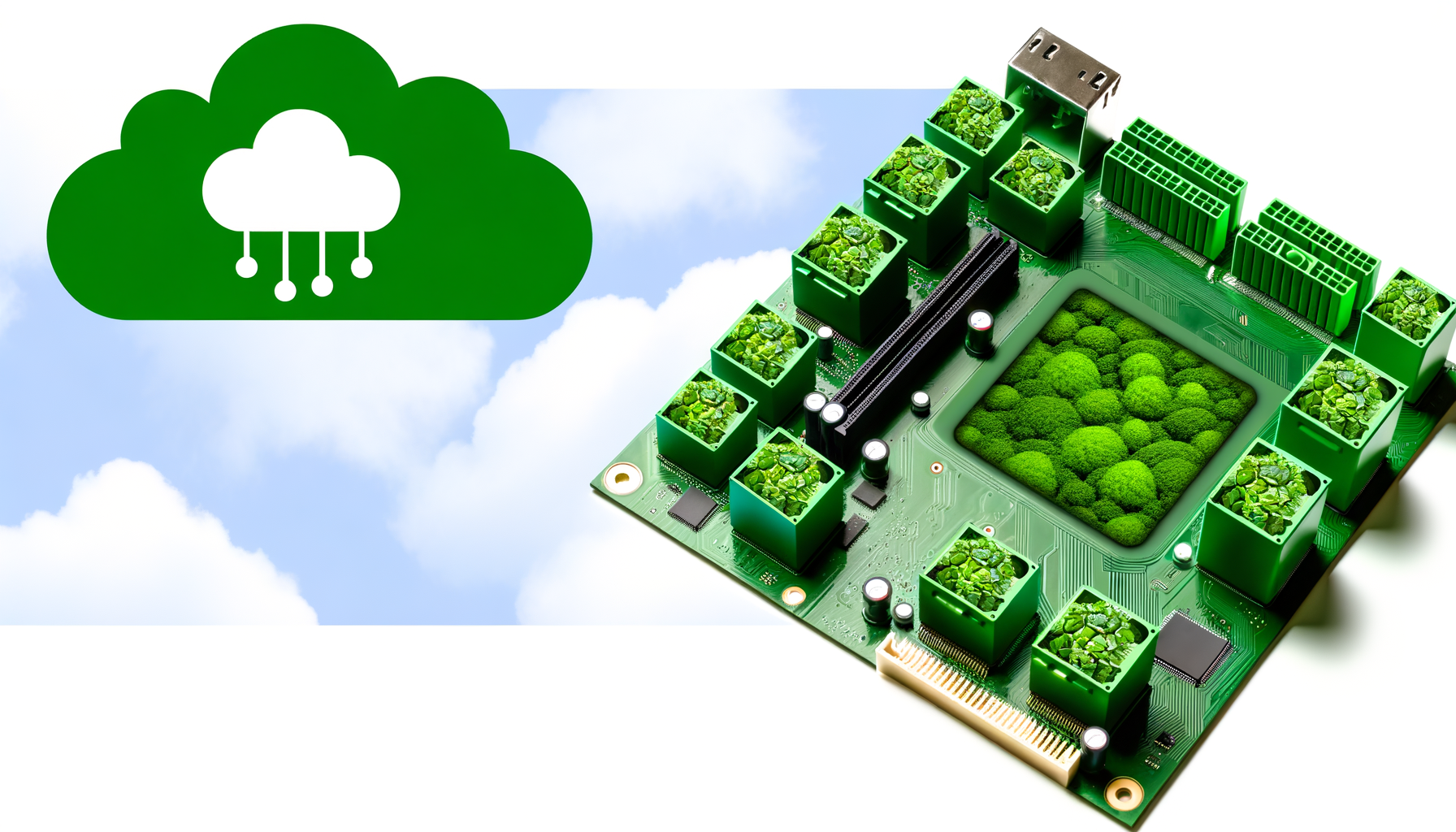The rapid advancement of technology has brought about significant changes in various sectors, including Information Technology (IT). However, with these advancements come challenges, particularly concerning environmental sustainability. The IT industry is a major consumer of energy and resources, contributing to carbon emissions and electronic waste. As the world becomes more conscious of environmental issues, there is a growing need for sustainable solutions in IT. This guide delves into the concept of ‘green tech IT,’ exploring how the industry can adopt eco-friendly practices to reduce its environmental footprint.
Table of Contents
- Introduction
- Understanding Green Tech IT
- Benefits of Green Tech IT
- Key Strategies for Implementing Green Tech IT
- Energy-Efficient Data Centers
- Renewable Energy Sources
- Sustainable Hardware and Software Design
- E-Waste Management and Recycling
- Case Studies in Green Tech IT
- Future Trends in Green Tech IT
- Interactive HTML Table: Comparative Analysis of Green Tech Solutions
- Conclusion
- Call-to-Action
Introduction:
The rapid advancement of technology has brought about significant changes in various sectors, including Information Technology (IT). However, with these advancements come challenges, particularly concerning environmental sustainability. The IT industry is a major consumer of energy and resources, contributing to carbon emissions and electronic waste. As the world becomes more conscious of environmental issues, there is a growing need for sustainable solutions in IT. This guide delves into the concept of ‘green tech IT,’ exploring how the industry can adopt eco-friendly practices to reduce its environmental footprint.
Understanding Green Tech IT:
Green tech IT refers to the use of environmentally friendly technologies and practices within the information technology sector. It encompasses a wide range of initiatives aimed at reducing energy consumption, minimizing waste, and promoting sustainability throughout the lifecycle of technological products.
**Key Components:**
– **Energy Efficiency:** Implementing technologies that consume less power.
– **Sustainable Materials:** Using recyclable or biodegradable materials.
– **Waste Reduction:** Minimizing e-waste through recycling programs.
– **Carbon Footprint Reduction:** Lowering greenhouse gas emissions associated with tech operations.
For further reading on green technology principles, visit [EPA’s Sustainable Technology](https://www.ep.gov/sustainability).
Benefits of Green Tech IT:
Adopting green tech practices offers numerous advantages:
1. **Environmental Impact:**
– Reduces carbon footprint.
– Decreases electronic waste.
2. **Economic Benefits:**
– Lowers operational costs through energy savings.
– Enhances brand reputation among eco-conscious consumers.
3. **Regulatory Compliance:**
– Meets government regulations on sustainability.
4. **Innovation:**
– Drives innovation by encouraging new technologies focused on efficiency.
For an overview on economic benefits related to green tech adoption, check out [World Economic Forum’s insights](https://www.weforum.org/agenda/archive/green-economy).
Key Strategies for Implementing Green Tech IT:
Implementing green tech requires strategic planning across various aspects:
Energy-Efficient Data Centers:
Data centers are notorious for their high energy consumption. Transitioning to energy-efficient data centers involves:
– Utilizing advanced cooling systems like liquid cooling.
– Adopting server virtualization techniques.
– Implementing renewable energy sources such as solar or wind power.
For detailed strategies on optimizing data center efficiency, refer to [Uptime Institute’s guidelines](https://uptimeinstitute.com/resources).
Renewable Energy Sources:
Switching from fossil fuels to renewable energy sources can significantly reduce an organization’s carbon footprint:
– Solar panels installed on office buildings or data centers.
– Wind turbines providing clean electricity.
Explore more about renewable energy options at [International Renewable Energy Agency (IRENA)](https://www.irena.org/).
Sustainable Hardware and Software Design:
Design plays a crucial role in sustainability:
– Developing hardware that consumes less power without compromising performance.
– Creating software optimized for lower resource usage.
Learn more about sustainable design principles from [Green Electronics Council](https://globalelectronicscouncil.org/).
E-Waste Management and Recycling:
Proper disposal and recycling are essential:
– Establish e-waste collection points within organizations.
– Partner with certified e-waste recyclers.
For best practices in e-waste management visit [Basel Action Network](http://www.ban.org/).
Case Studies in Green Tech IT:
Examining real-world examples provides valuable insights:
Company A Case Study:
Company A implemented several green tech initiatives resulting in:
1. A reduction in annual energy consumption by 30%.
2. Significant cost savings due to efficient resource utilization.
Read more about Company A’s journey at [Company A’s official page](#).
Company B Case Study:
Company B focused on sustainable product design leading to:
1. Products with longer lifespans reducing overall waste generation.
2. Enhanced customer satisfaction due to reliable eco-friendly products.
Discover Company B’s approach at [Company B’s official page](#).
Future Trends in Green Tech IT:
The future holds promising trends that will shape green tech:
AI and Machine Learning for Sustainability:
Artificial Intelligence (AI) can optimize processes leading to reduced resource usage:
1. Predictive maintenance reducing downtime and wastage.
Explore AI applications at [MIT Technology Review](https://www.techreview.com/).
Blockchain and Sustainable Practices:
Blockchain ensures transparency enhancing trust in sustainable practices:
1. Tracking supply chains ensuring ethical sourcing.
Learn more about blockchain’s impact from [IBM Blockchain](https://www.ibm.com/blockchain).
### Interactive HTML Table: Comparative Analysis
| Sustainability Aspect | Description | Main Benefits | Main Challenges |
|---|---|---|---|
| Energy Efficiency | Reducing power consumption | Lower operational costs | Initial investment cost |
| Renewable Energy | Using solar/wind power | Reduced carbon footprint | Dependence on weather conditions |
| E-Waste Management |



Leave a Reply